#kilpisjarvi
Text

" Smokin’ chimney ❄️" // © Joonas Linkola
#Kilpisjarvi#Finland#nature#landscape#Aurora#Borealis#Cabin#Snow#photography#aesthetics#wanderlust#explore#follow#discover
87 notes
·
View notes
Photo

Solitude – Kilpisjärvi Finland 2018
by Mikko Lagerstedt
49 notes
·
View notes
Text
“We are all lichens.” The “shifting contours” of creatures. Entities are ”bound up” with each other and with environments. Lichen are composite creatures, partially built or defined by environmental and/or “social” relationships. “More-than-human sociality”.
---
[B]ioindication [observing lichen as indicator species for health of an ecosystem] [...] gives rise to more specualtive engagements. By speculative [...]: the distributive capacity of organisms and environments to generate new modes of encounter together with new propositions for ways of being. […] Subjects, relations and milieus all have the potential to shift and transform, and are not pre-given, although they can be in-formed by sedimentations and inheritances. This is also to say that what constitutes ‘human’ is not a fixed entity, and can shift in relation […]. Here and in relation to lichens […], speculation also extends to the shifting contours of what counts as an organism […].
---
Research focusing on the symbiotic characteristics of lichens suggests that even the notion of an organism as an individual is fraught with problems, and that a more ecological notion of subjects better characterises how entities are bound up with multiple other organisms and environments.
In this way, one group of researchers working on symbiosis has suggested […] that ‘we are all lichens’. […]
Although there are approximately 13,500 ‘formally described’ lichen species (and an anticipated 25,000 actual lichens), the contours of lichens as distinct ‘species’ are also shifting, since they are organisms made up of a fungus, alga or cyanobacteria, and even a third entity in the form of yeast. The fungal partner provides the structure and protection for the lichen, while the alga produces food in the form of chlorophyll that the fungus taps for sustenance. As composite organisms and relationships situated across multiple kingdoms, lichens are further entangled with vegetation since they both live on vegetation and make substrates available to vegetations by breaking down and weathering rocks and soils. […]
---
One could encounter such a lichen garden in-the-making in the Arctic, for instance, where these organisms are not only pervasive but are also key to the ecologies found there. […] Lichens, for instance, provide sustenance for reindeer and by extension Indigenous people in the Arctic, an environment where considerable changes are underway due to resource extraction in the form of mining and logging. The disruption of lichens captures the emergence of environmental justice issues […]. In Kilpisjarvi, a location in the Finnish Arctic, a debate has unfolded over time about land use conflicts which encompass biologists, reindeer herders, lichens, conservation areas, and rare flowers […]. Extractive industries, recreational housing, as well as conservation areas and biological field stations, contribute to the shifting landscape of lichens and its relations to other entities.
In this way, Tsing has discussed the ways in which organisms can be productive of forms of ‘more-than-human sociality’. A forest, for instance, encompasses not just […] individual organisms, but also materialises and sustains the more-than-human social worlds that are made through these organisms. […] The shared ‘phytosociological associations’ and ‘multidimensional relationships’ of indicator organisms are an area of speculative possibility […].
---
The notion of engaging with organisms through their ‘point of view’ is one that now populates a wide range of environmental theory and practice. In her work on matsutake mushrooms, Tsing considers how to take into account perspective from fungal points of view, which might recast encounters with forests, where multiple overlooked ‘participants’ begin to have more marked roles in constituting ‘social relations with other beings’. […] A lichen point of view, in this case, would take seriously the ways in which this environmental subject is taking account of, and forming experiences of, its world. […] This has further consequences for how we encounter ‘the ends of the world’ as an environmental event, as well as a remaking of the worlds that we might cultivate and care for. […]
---
Text by: Jennifer Gabrys. “Sensing Lichens: From Ecological Microcosms to Environmental Subjects.” Third Text 32. 2018. [Bold emphasis and some paragraph breaks/contractions added by me. italicized first paragraph/heading in this post added by me. Presented here for commentary, teaching, criticism purposes.]
#multispecies#interspecies#lichen#more than human#tidalectics#ecologies#geographic imaginaries#lichens#ecology
124 notes
·
View notes
Text








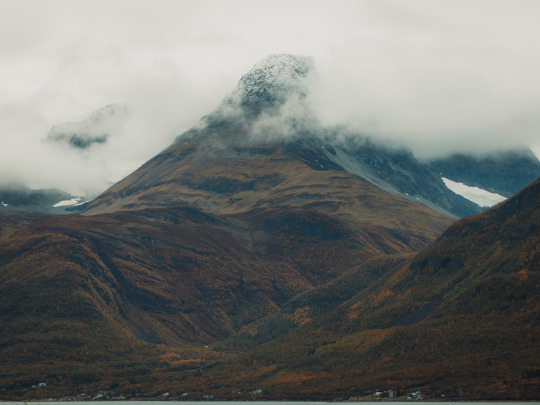

Day trip to Lyngenfjord.
Tromso is on a coast, and in mind-September, half of the trees were still green. Lyngenfjord is located deeper inside the country; trees are primarily orange. I think if I make it to the north in autumn another time - I'll be traveling from Kilpisjarvi (where autumn comes early) to Tromso (where it happens late).
5 notes
·
View notes
Text
Sabato 21 ottobre 2023 uscirà su YouTube la docuserie Northwards (Verso Nord), dedicata al tema del cambiamento climatico, alle sue evidenze nell’Artico, ed alla ricerca scientifica portata avanti da INTERACT, progetto di ricerca e cooperazione internazionale creato nel 2011 dal Premio Nobel Prof. Terry Callaghan e finanziato dalla Comunità Europea.
La serie, in sette brevi episodi, è dedicata agli scienziati che lavorano in circa ottanta stazioni di ricerca (sparse in tutto l’Artico e Sub-Artico) e al supporto fondamentale che ad essi fornisce il progetto.
Sono previste due premières cinematografiche (ad ingresso libero) di Northwards: venerdì 13 ottobre alle ore 20.00 al Cinema Troisi di Roma (via Girolamo Induno, 1), nella versione originale (sottotitolata in italiano) sabato 14 alle ore 16.00 al Palazzo Coelli di Orvieto (TR) - piazza Febei, 3 -, nella versione doppiata in italiano. A Orvieto seguirà un dibattito, moderato dalla giornalista Roberta Ammendola, ed in cui interverranno Terry Callaghan, Margareta Johansson, Giorgio Lupano, Luisella Bianco e Fabio Catena.
Northwards è una docuserie avvincente - che vede come protagonista Giorgio Lupano - per la cui realizzazione sono occorsi due anni. Ha l’obiettivo di raccontare l’attività di INTERACT, il più grande network di stazioni di ricerca terrestri nell’Artico, che coinvolge università e istituti di ricerca e sedici Stati europei e rende possibile il lavoro di migliaia di ricercatori nei luoghi più sperduti dell’emisfero boreale. L’attività divulgativa viene fatta con un approccio “popular” ed un volto conosciuto del mondo dello spettacolo come quello di Giorgio Lupano.
Lupano si presenta sul campo di lavoro degli scienziati per parlare con loro come farebbe l’uomo comune, estraneo all’ambiente artico ed alla ricerca; pone loro le domande, anche le più banali, che una persona digiuna di ricerca scientifica farebbe; tocca con mano cosa significhi vivere e lavorare nel freddo territorio del circolo polare artico. Il tutto mediato dalla necessaria ironia che occorre per coinvolgere una platea di “non addetti ai lavori” - ai quali la docuserie è rivolta - su argomenti molto importanti per il futuro del Pianeta.
Il viaggio “verso Nord” parte da Stoccolma, dove Giorgio Lupano incontra il Premio Nobel Prof. Terry Callaghan alla Swedish Royal Academy of Science (dove vengono assegnati i premi Nobel per le materie scientifiche) e da qui prosegue verso la stazione di ricerca di Abisko, nel nord della Svezia, dove incontra la coordinatrice del progetto INTERACT, la Dott.ssa Margareta Johansson, la quale lo introduce agli studi sul permafrost. La docuserie propone poi immagini suggestive girate nella tundra svedese, in Lapponia, dove G. Lupano incontra il Sami Niklas Labba che, insieme alla Dott.ssa Kirsi Latola, parla del delicato rapporto fra la comunità scientifica e le popolazioni indigene dell’Artico.
Nelle successive puntate, Lupano visita alcune remote stazioni di ricerca di INTERACT: in Finlandia, a Kilpisjarvi, per incontrare esperti di nuove tecnologie; in Groenlandia (non raggiungerà mai l’Artic Station, sperimentando in prima persona le difficoltà della vita in un ambiente così estremo) per farsi spiegare da Morten Rasch ed Elmer Topp-Jørgensen il complicato lavoro di uno Station Manager; e poi ancora in Islanda ed alle isole Faroe per incontrare Hannele Savela e parlare del programma di Transnational Access, che permette a migliaia di scienziati provenienti da tutte le regioni del mondo di accedere alle stazioni di ricerca per condurre i propri studi sul cambiamento climatico.
Il viaggio si conclude in Gran Bretagna, a Glossop (vicino a Manchester), a casa del Prof. Terry Callaghan, per un riassunto sulle esperienze vissute e sulle cose apprese e per gettare uno sguardo sulle sfide che ci aspettano per salvaguardare il futuro del pianeta.
La serie sarà trasmessa anche sui canali web (www.eu-interact.org) e social di INTERACT.
Trailer
https://youtu.
0 notes
Photo



What a fresh start for the day flying a drone in -20°c❄️ nevermind the arctic wind!!I can tell you it's a pain in the fingers as you can't use gloves, but the results were worth it. 😊
1st Feb 2018, Kilpisjärvi.
___
This month I am joining photo a day challenge with @fractureme . Share your moments using #FocusOnMoments on instagram.
Want 15% off fractureme glass prints? Use the code: PHOTOADAY http://frctr.me/2nmFTi5
___
by Tiina Törmänen | web | FB | IG | STOCK
#landscape#aerial#drone#arctic#lapland#sweden#finland#reflections#self portrait#winterphotography#tiina törmänen#lappi#talvi#kylmä#kilpisjärvi#kilpisjarvi#river#reflection#FocusOnMoments
346 notes
·
View notes
Photo

Congratulations Finland 100 years! #karikola #lightart #luminousfinland100 #ehrgeiz #kilpisjarvi #saana #finland #nikon #D850 (at Saana)
4 notes
·
View notes
Photo

12-16 The dramatic & remote wilderness of Lake Kilpisjarvi. This stunning lake is located on the boarders of Sweden, Finland & Norway in the Arctic Circle. #kilpisjarvi http://dlvr.it/Q6Dxky
3 notes
·
View notes
Photo

Saana fell, Kilpisjärvi, Finland https://www.wildplanetblog.com/travel-blog/2019-08-23-visit-kilpisjarvi-finland/ #saana #kilpisjärvi #kilpisjarvi #laplandfinland #lapland #finnishnature #luontokuva #luonto #yleluontokuva #visitlapland #travellapland #north #nordicadventures #nordic #nordicinspiration #sunset #sunset_pics #sunsetlover #landscapephotography #landscape #travelgram #naturegram #wildernessculture #wilddestinations #wilderness #silence #outdooradventures #outdoors #ourplanetdaily #earthporn (at Kilpisjärvi) https://www.instagram.com/p/B4248v2g6PQ/?igshid=xs8l7anseac4
#saana#kilpisjärvi#kilpisjarvi#laplandfinland#lapland#finnishnature#luontokuva#luonto#yleluontokuva#visitlapland#travellapland#north#nordicadventures#nordic#nordicinspiration#sunset#sunset_pics#sunsetlover#landscapephotography#landscape#travelgram#naturegram#wildernessculture#wilddestinations#wilderness#silence#outdooradventures#outdoors#ourplanetdaily#earthporn
0 notes
Text
Walk 6 : Kilpisjärvi (Finland) to Goldahytta (Norway)
‘What is that land of hill and dale
That is so beautiful,
The land aglow with summer days,
Land with the northern lights ablaze,
Whose beauty all the seasons share,
What is that land so fair?’
Aleksis Kivi

This walk description is from my Tumblr blog ‘Dartmoor (and other) walks’, where you will find guides some of my other walks, and (eventually) hints, tips, for successful hiking and some of my favorite places
This walk is the first day (outward bound) of a two day walk. The return journey is described here
There is nothing better than walking in these mountains. The air is fresh, evoking a sense of space and wildness. The rivers are clean, bubbling down from their watersheds, over rock strewn beds. There is wildlife all around. Here you can see herds of reindeer, arctic hares and (if you are very lucky) lemmings. There is a sense of solitude and quiet if the weather is fine, and a sense of challenge and adventure if it is not. This music sums up my feelings in this part of the world. I find it going through my head as I watch the clouds in the valleys in the mornings, trying to guess what the weather will be like.
This is a the first part of a two day walk. It follows the final (or first) section of the Troms Border trail. It starts in Finland and after climbing into the hills descends to its end in a forest of birch, with views of cloud-wrapped peaks on the horizon.
Walk data
Distance: 13.1 miles (21.1 km) (approximately)
Grade:Moderate in summer. In winter temperatures may well below freezing and there is likely to be lots of snow, under these conditions this would be specialist walking, not to be undertaken without a guide.
Start Point : Kilpisjärven Retkeilykeskus, Kilpisjärvi (920,595)
End Point : Goldahytta (801,626)
Facilities: The Retkeilykeskus has a restaurant, a shop selling limited supplies. It has lodge and rooms to book, and offers some places to pitch tents. It has saunas, a drying room,laundry facilities for residents. The village of Kilpisjärvi , about 3 miles (5 km) south east along the E8 from the start point has a supermarket, a shop selling trail clothes, restaurants, hotels and lodges
Transport: public transport: There are buses from Rovaniemi 267 miles (429 km) in Finland and from Tromso 103 miles (165 km) in Norway. Services are primarily in summer and Autumn. See here for further details. driving: Kilpisjarvi is on the E8 (highway 21) from either Norway of through Finland.
Maps and navigation: Skibotndalen 10149, published by Nordeca and Halti Kilpisjärvi published by Karttakauppa. Both are 1:50000 scale. The Karttakauppa map has excellent detail on the Finnish side, but pretty much only contours and names on the Norwegian side. The Nordeca map has good detail on both sides, and this is the map used for reference in this walk. Coordinates are taken from it. A compass is essential as visibility can be very bad if there is fog or rain. Phone signals, once up in the mountains may be intermittent or non-existent. Always leave your route and coordinates with somebody. Carry a whistle.
Gear : If you are staying in the hut you will still need a sleeping bag, as these are not supplied. If you are not, you will also need a tent and cooking gear. I would advise taking a tent anyway, as it is possible to get lost or injured and you do not want to spend the cold hours exposed to the elements here, even in summer. You need good, strong, waterproof, footwear: Certainly not trainers. The midnight sun here lasts from the end of may to almost the end of July, during the early part of August it will not get dark even when the sun has dipped below the horizon, but as the month progresses there will be increasing hours of twilight, so taking a torch depends on when you are going. Waterproof and warm clothing, including a hat are essential.And you will have to carry your own food. Sticks and crocs for the river crossing are advisable.
Walk overview
The longest single stretch is the first, which is easy walking along the E8. The only challenge is making sure you locate the start of the Troms Border trail shortly after crossing the border into Norway. There is an undulating climb into the mountain passes, with some small streams and a river to cross.This is followed by a longish section over a rock field, and shortly after this a fairly steep descent through a forest of birch and rowan, which is usually wet and boggy, down to the huts at Golda
Route Map
stage 1 : Route map and elevation
stage 2 : Route map and elevation
stage 1 : Route map and elevation
Stage 1 : Kilpisjärven Retkeilykeskus to the Troms Border Trail along the E8, 5.2 miles (8.4 km)
This walk starts at the Walking Centre a few kilometers from the Sami village of Kilpis on the side of a large, long lake (like a loch) called Kilpisjärvi. It is worth visiting the village, where you can get traditional Finnish food, and listen to the huskies barking and howling in their compounds. It also has a supermarket and other shops. And most importantly in my view, good, strong, simple coffee.
The Walking Centre, Kilpisjärven Retkeilykeskus, has everything that you could want, whether you are starting a long hike and want to get packed and supplied, or if you are finishing one and want to get rested, showered and well fed (in any order). It is also next to one of Finland’s most popular fells, the Saana, which you can walk up in a few hour for magical views of Finland’s arctic landscape.
This stage of the walk is very straightforward. Leave the Walking Centre and turn right (more or less northwestard) onto the E8, which is the major road in this area.
Finland is relatively flat, but ahead you can see mountains. This is Norway which is only five miles (8 km) away. It is odd how the mountains start as soon as you pass the border.
Being a northern Finnish road, you are quite likely to see herds of reindeer grazing to the side, crossing the road, or even walking along it, which they seem to do to with the intent of slowing down the traffic. For although they are shy animals and will run away if you approach them quickly or noisily, they seem to be unfazed by traffic and will amble along with an impatient truck behind them until they feel they have done their bit for road safety. click her for an example. if you see a herd by the road, and you are quiet and patient, and slow, then you can sit down and watch. Initially they will move away from you, but if you don’t appear to pose a threat they eventually return to their grazing. Do not feed them under any circumstance. They belong to the locals, and they have very delicate nutritional needs, which are all catered for by the flora that grows in the tundra, especially reindeer moss (which,incidentally, is also used to make aquavit, which you can get in the bars in town).

The E8 from Kilpisjärvi looking towards Norway
The road slowly descends for a while and then begins to climb for about 4 miles (6.5 km). It slowly leaves the lowland and the sides of the road become progressively rockier. To the right are moor-like hills, and to the left the feet of the mountains. Eventually on the right you pass a mountain called Korkea-Jehkas, (935,639) which reaches just over 900 meters (from the road level which is at about 500 m). It has steep cliff sides and is often, topped by clouds, while on the left the road drops down to a small lake, Siilasjärvi, with a small island on the far side.
Shortly after this you reach the Finland/Norway border. (900,669)There is a customs building and often police cars outside, but the border is ‘open’ and it is extremely unlikely that the border guards will want to stop you, even to check your passport.
After passing the border keep a keen eye on the left side and you will soon see a trail leading northwest in the direction of the hills.(899,675) There are numerous little paths going off on both sides of the road, but the one that is our trail is marked with a stone painted with a red ‘T’. This is the symbol for the Troms Border Trail (although sometimes it is just a red splotch). These markers will guide the rest of the day.

Lots of interesting Fungi can be seen on this trail. The leaves are cloudberry. The fruit of this is delicious
Stage 2 : From the E8 to Nilppagielas. 4.7 miles (7.5 km)
This section of the walk follows the Troms Border Trail, using as guides the red ‘T’s and circles, painted on tall stones or small cairns, as shown below

Way marker on the Troms Border Trail
The path climb gradually up plant clad slopes for about ,3 miles (5 km), before leveling out in a rocky terrain with small lakes dotted around it.

The lakes of Siilvasjärvi and Kilpisjärvi from Bossovárri, with clouds bringing rain.
Shortly after leaving the road the trail begins to bear westwards and climbs over the feet of a small hill and passses a small lake to the left, before descending gently to the marshy land that sits on either side of the Bossohohka. This is the only water course that can’t be stepped over. If it has rained a lot it may be deep and fast, so care is needed. I took my boots off, put on my Crocs, loosened my rucsac, and used my sticks to wade across. The waters was very cold, and very refreshing. I sat on the bank on the far side while my feet dried, and looked at some rather ominous clouds that were coming up from the south. Although only a mile and a half (2,5 km) from the road,it felt as if I was nowhere near any civilisation. Some birds whose name I don’t know were making pipping noises in the marsh land to by the river. A thin chilly wind ran through the tundra. To the southwest the tall top of Goallàroinnibba was lost in low cloud.

One of many little stream running down to the bog at Bossojohka
After the water crossing the trail bears southwards and the again southwest, running around the feet of Goallàroinnibba Here the rain caught up with me and came down, cold and and misty. One of the advantages of walking this time of year this far north is that it won’t get dark, so I could take my time and sit in my storm shelter and read, avoiding a drenching, listening to the rain pattering on the plastic shell.

Low visibility : Misty rain near Nilppagielas
The trail now continues southwestwards into Nilppagielas, which is an flat area of rockfields and lakes. The trail markers here are (fortunately) frequent and obvious. Sometimes merely sticks, and often artfully constructed towers of rocks, one was at least a meter tall. They must fall over, only to be replaced by the dedicated people who volunteer for the DNT.
This stage ends (835,653) in this stony area, shortly after crossing a little stream that rolls southeastward into the lake Nilppanajàgajàvri, a sort of lumpy horseshoe shaped water to the left of the track. The slight bowl shaped depression in this par of the rockfield somehow deadens the sound, and the only noise is to be heard is your own boot on the rocky surface.
Stage 3 : Nilppagielas to Goldahytta. 3.2 miles (5.2 km)
In this section the trail leaves the rockfields and descends through a forest of small trees and bogs, down to the hut and a place to camp.

The end of the rocky terrain and the edge of the descent to Goldahytta, showing one of the way markers made of piled stones.
This is typical arctic woodland: Little white barked birch trees, thinly spread in marshy ground. The streams from the numerous small lakes on the plateau that we are descending from run through these woods to the valley below. It is squelchy territory at the best of time, and after rain even more so. Take care to follow the markers, as you concentrate on avoiding slipping or putting your foot in a soggy hole. The air has a wonderfully peaty scent.
At the bottom you will find the Goldahytta, which is really three huts and a latrine block. If you have a key, you will find that you are probably the only person in the hut, even in summer, so you can fire up the woodburning stove, hang your wet gear on the drying racks, and sit in a chair with your dinner on a table and stare at the woods outside, This is an especially comforting thing to do if it is raining.
I wasn’t using a hut, and of course it started raining again. It is not difficult to find a clear area near the huts, and with a lot of cursing I soon had my tent up. As soon as I got in it the rain stopped. The other advantage of the huts, I now remembered, is that hardly any mosquitoes can get in them They do so love damp woods!
Some very well equipped Norwegian walkers passed by and said ‘hei’, then disappeared off westwards along the Border Trail, but apart from these I saw no other people.

Camp at Goldahytta
The lowering sun began to make silhouettes of the tall peaks to the west, and thick clouds gathered around the their feet (see picture below). I have trouble falling asleep when it won’t get dark. It feels a bit like cheating. But a good walk over mountains in the unpolluted air is a natural soporific, and it was only a couple of hours after eating that I was snoring gently.

Mountains and cloud from Goldahytta
0 notes
Photo

Northern light was seen in Kilpisjärvi, Finland.
#nature#aurora borealis#northern light#Kilpisjarvi Finland#outdoor#travel#photography#landscape#galaxy
5 notes
·
View notes
Photo

The Eridanos
Today, the Amazon is the uncrowned king of rivers on our planet. But this has not always been the case. In fact, it's only since very recently that South America took the title from Northern Europe for supporting the biggest river system on the planet. Geologists call this ancient river the Eridanos. In Greek mythology, the Eridanos was beyond the river Po, famous for its islands of amber.
Looking at a map of Northern Europe, this first thing people will notice are the intricate systems of waterways in this part of the continent. It's easy to imagine looking at that same map, that millions of years ago, a river ran from the north of Lapland, down through the Gulf of Bothnia, through the southern Baltic. Further down its stream it would first be carving out the various straits between the Danish isles before reaching the Atlantic Ocean south of Rogaland in Norway. At later times, after Denmark lifted up in the Miocene, this river would flow through what is now Jutland and the German Bight, taking in the waters of the rivers Elbe, Rhine, Scheldt and Thames, before creating an enormous delta system in what's now the central North Sea and the Northern Netherlands. At this time in its history, the Eridanos was at its largest, carrying as much sediment as the modern Ganges, nearly as much water as the modern Amazon, and being as long as the modern Danube, draining virtually all of Europe north of the Alps.
The Ice Ages eventually spelled doom for this magnificent river. At first, the advent of the ice caps in northern Fennoscandia allowed for more glacial runoff. However, when the severity of the ice ages increased in the Mid-Pleistocene, more and more of the Eridanos basin got buried underneath glacial ice, and by 700.000 years BP, the entire river disappeared underneath the ice cap. The sheer weight of the ice depressed the northern part of Europe so much, that after the retreat of the ice, what was formerly the wide valley of the Eridanos, got filled in with water, creating the modern day Baltic Sea.
Some aspects of this great river's legacy remained, though; 90% of the world's extractable amber can be found near coasts and islands of today's Baltic Sea. Also, with Northern Fennoscandia rising faster than the current sea level rise, the Baltic essentially behaves like a giant river, even at this date; the flow is primarily north to south, with most of the salty water flowing out through the Kattegat, being constantly replaced with fresh water from the many rivers that feed it. As a result, the Baltic Sea is merely brackish in its main basin, and by some definitions, the Gulf of Bothnia and Gulf of Finland could be considered fresh-water bodies.
~Clint.
Further reading and sources:
http://bit.ly/1ArDDmU
http://bit.ly/1BlLVf9
De Ondergrond van Nederland, Wolters-Noordhoff, ISBN 90-01-60514-1
Image: Lake Kilpisjarvi in Lapland, the source region of the Eridanos
Image credits: Clint.
84 notes
·
View notes
Photo

Kilpisjarvi. Photo: @mikkolagerstedt #kilpisjärvi #nature #landscape #scenery #explore #travel #adventure #photography #wanderlog https://www.instagram.com/p/Bp4_EnulLZ_/?utm_source=ig_tumblr_share&igshid=1dsw84essbu6x
408 notes
·
View notes
Text



Ecological Microcosms and ‘Phytosociological Associations’
While to some degree bioindication [observing lichen as indicator species for health/pollution of an ecosystem] might signal the adherence to an index as a systematic way of reading environmental change, in other respects it gives rise to more speculative engagements. By speculative [...]: the distributive capacity of organisms and environments to generate new modes of encounter together with new propositions for ways of being. [...] Subjects, relations and milieus all have the potential to shift and transform, and are not pre-given, although they can be in-formed by sedimentations and inheritances. This is also to say that what constitutes ‘human’ is not a fixed entity, and can shift in relation [...].
Here and in relation to lichens [...], speculation also extends to the shifting contours of what counts as an organism [...].
Research focusing on the symbiotic characteristics of lichens suggests that even the notion of an organism as an individual is fraught with problems, and that a more ecological notion of subjects better characterises how entities are bound up with multiple other organisms and environments.
In this way, one group of researchers working on symbiosis has suggested [...] that ‘we are all lichens’. [...]

Although there are approximately 13,500 ‘formally described’ lichen species (and an anticipated 25,000 actual lichens), the contours of lichens as distinct ‘species’ are also shifting, since they are organisms made up of a fungus, alga or cyanobacteria, and even a third entity in the form of yeast. The fungal partner provides the structure and protection for the lichen, while the alga produces food in the form of chlorophyll that the fungus taps for sustenance. As composite organisms and relationships situated across multiple kingdoms, lichens are further entangled with vegetation since they both live on vegetation and make substrates available to vegetations by breaking down and weathering rocks and soils. [...]
One could encounter such a lichen garden in-the-making in the Arctic, for instance, where these organisms are not only pervasive but are also key to the ecologies found there. [...] As temperatures continue to become warmer due to climate change, lichens that have lived in Lapland for nearly 10,000 years (where the oldest living lichens can be found), might also begin to shift, decline, or otherwise disappear as new material-environmental matrices are established. [...] Because substances ‘taken up by lichens may subsequently reach other components of the surrounding biosphere via litterfall, leaching, bacterial incorporation, or no-cellular particle formation’, lichens in the context of rapid twenty-first century environmental change become pivotal transformers [...].

In as much as lichens are distinct organisms, they are also ecological microcosms, reworking the boundaries of species as distinct entities and transforming them into ecological communities and relations [...]. The shifting contours of organisms and environments indicate the ways in which processes of individuation occur in and through eco-political registers, where what comes to count as an entity is that which is also sustained by other entities and environments. [...]
Lichens, for instance, provide sustenance for reindeer and by extension Indigenous people in the Arctic, an environment where considerable changes are underway due to resource extraction in the form of mining and logging. The disruption of lichens captures the emergence of environmental justic issues [...]. In Kilpisjarvi, a location in the Finnish Arctic, a debate has unfolded over time about land use conflicts which encompass biologists, reindeer herders, lichens, conservation areas, and rare flowers [...]. Extractive industries, recreational housing, as well as conservation areas and biological field stations, contribute to the shifting landscape of lichens and its relations to other entities.

In this way, Tsing has discussed the ways in which organisms can be productive of forms of ‘more-than-human sociality’. A forest, for instance, encompasses not just [...] individual organisms, but also materialises and sustains the more-than-human social worlds that are made through these organisms. [...] The shared ‘phytosociological associations’ and ‘multidimensional relationships’ of indicator organisms are an area of speculative possibility [...].
The notion of engaging with organisms through their ‘point of view’ is one that now populates a wide range of environmental theory and practice. In her work on matsutake mushrooms, Tsing considers how to take into account perspective from fungal points of view, which might recast encounters with forests, where multiple overlooked ‘participants’ begin to have more marked roles in constituting ‘social relations with other beings’. [...]
A lichen point of view, in this case, would take seriously the ways in which this environmental subject is taking account of, and forming experiences of, its world. [...] This has further consequences for how we encounter ‘the ends of the world’ as an environmental event, as well as a remaking of the worlds that we might cultivate and care for. [...]
-------
Heading, images, captions, and text published by: Jennifer Gabrys. “Sensing Lichens: From Ecological Microcosms to Environmental Subjects.” Third Text 32. 2018.
100 notes
·
View notes
Photo
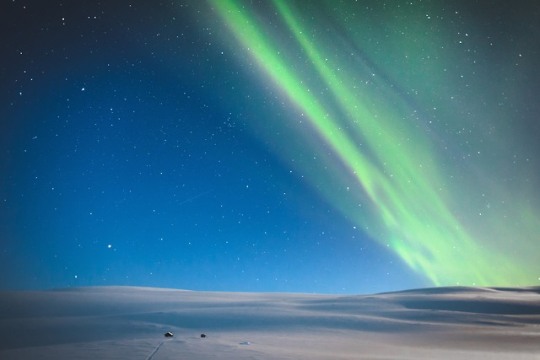

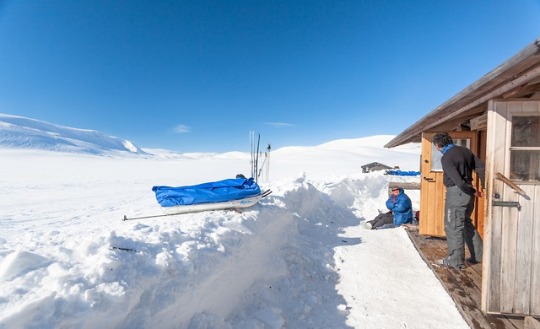
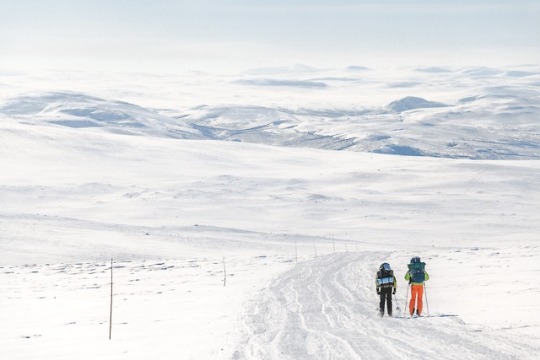
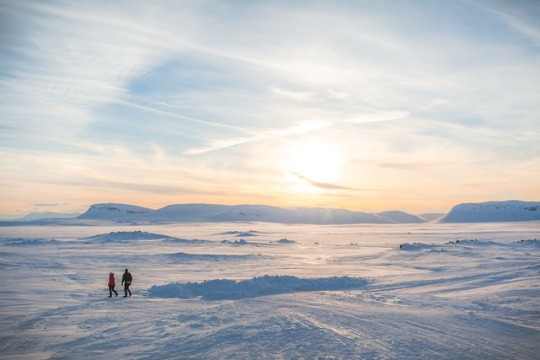
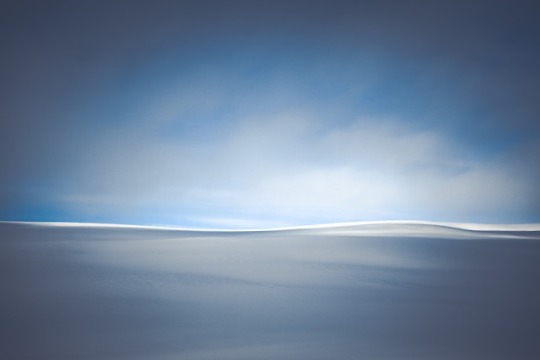
Kilpisjärvi - Halti
Lapland, Finland 4/2014
0 notes
